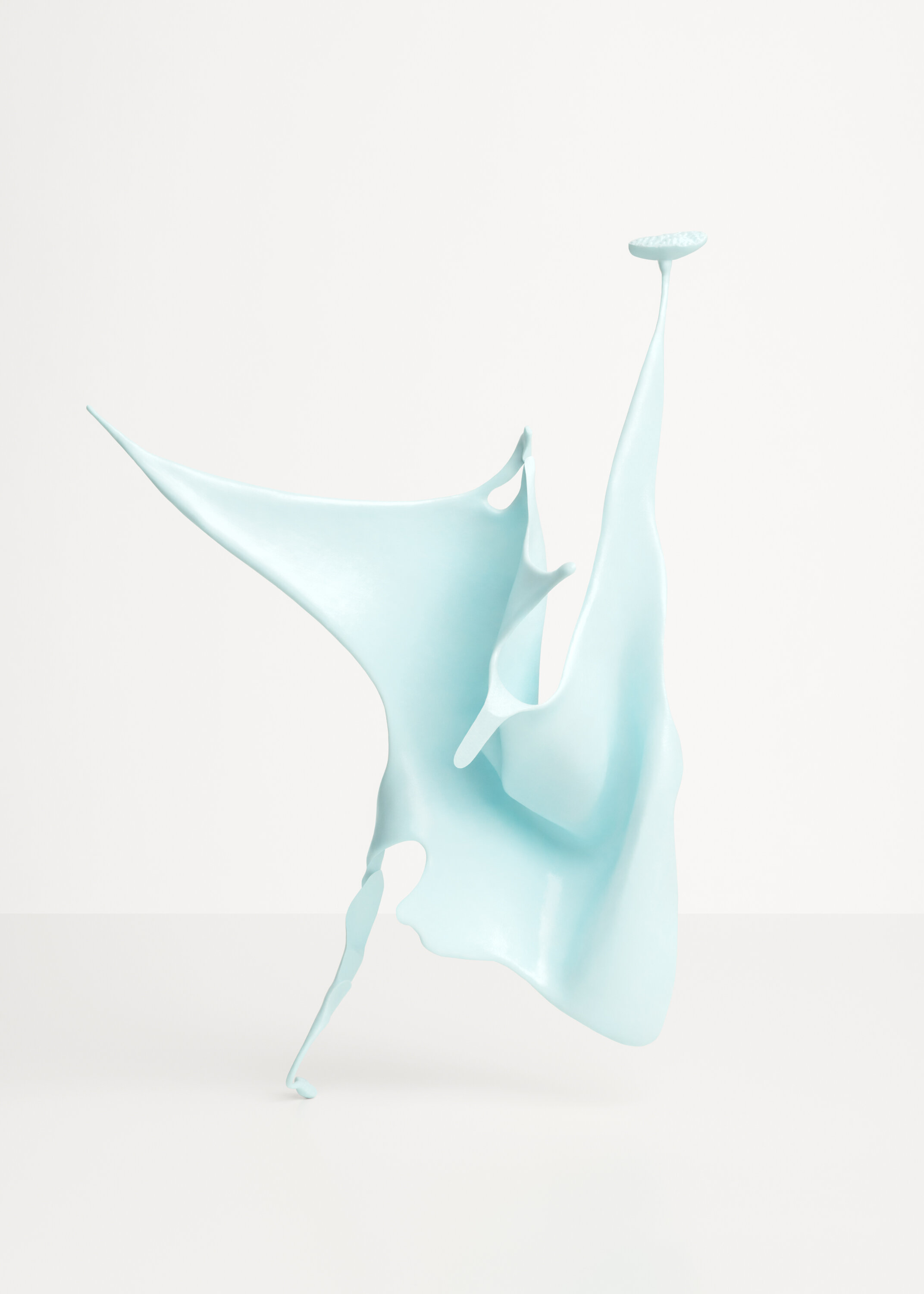Gowen Contemporary | Genève
27. September - 17. November 2019
Blush
Marta Zgierska
afterbeauty
Die Afterbeauty-Serie (2018) besteht aus weggeworfenen Schönheitsmasken. Die Performance wird durch einen sich wiederholenden Prozess und eine rituelle Überlappung mehrerer Schichten von Schönheitsprodukten auf der Haut bis an die Grenzen des Erträglichen wiederholt, bis sie für die Haut schädlich wird. Das fotografische Ergebnis ist das Bild eines farbigen Materials, das in einer scheinbar abstrakten Form geformt ist. Die Afterbeauty-Masken, ähnlich wie Fleischhüllen, deren Mehrdeutigkeit durch die vergrößerte Skala verstärkt wird, disponieren den Betrachter zu einer ästhetischen Wahrnehmung und Freude und hinterfragen den Begriff der weiblichen Schönheit.
In der Reihe Votive Figure (2019) verweist Marta Zgierska auf die Tradition der religiösen Opfergabe, die zur Erfüllung eines Gelübdes oder zur Suche nach Heilung oder Schutz gemacht wird. In der religiösen Populärkultur werden solche Darstellungen oft in Form von modellierten Reproduktionen verletzter Körperteile oder Organe dargestellt, und das Wachs erinnert an spirituelle Hilfe bei einem bestimmten Thema - versagendem Sehvermögen, Fruchtbarkeit, arthritischen Gliedmaßen. Dieser traditionelle Inhalt wird von Marta Zgierska in ihrer Erzählung subtil dargestellt. Indem sie ihren eigenen Körper in einer Wachsschale bedeckt, untergräbt die Künstlerin die religiösen Modelle, die selbst zur Votivfigur werden und ein Opfer ihres Körpers für einen neuen Gott vorschlagen: Schönheit. Auf diese Weise erkundet die Künstlerin die Kanons der Schönheit und untergräbt den Druck, den die heutige Gesellschaft auf das Bild der Frau ausübt.
Zgierska verwendet bewusst eine sehr ästhetische Bildsprache, die mit der Kosmetikindustrie und zeitgenössischen Kommunikationsformen wie Instagram verbunden ist, um mit dem Betrachter zu spielen. Im Kontrast zwischen der schönen Erscheinung ihrer Werke und dem schweren, rohen, physischen Prozess, der unter einer hübschen Beschichtung verborgen ist, lädt sie uns ein, über die Oberflächlichkeit der modernen menschlichen Wahrnehmung nachzudenken.
votive figure
La série Afterbeauty (2018) est réalisée à partir de masques de beauté après leur utilisation. La performance est poussée à l’extrême par un processus de répétition et un rituel de superposition de couches sur la peau, répétés jusqu’aux limites du physiquement supportable, jusqu’à devenir nuisibles pour la peau. Le résultat photographique est l’image d’une matière colorée à première vue abstraite. Les masques Afterbeauty, comme des enveloppes de chair, dont l’ambiguïté est renforcée par l’agrandissement de l’échelle, amènent le spectateur vers une pure expérience esthétique et questionnent la notion de beauté féminine.
A travers la série Votive Figure (2019), Marta Zgierska se réfère à la tradition de l’offrande religieuse faite dans l’accomplissement d’un vœu ou dans la quête de guérison ou de protection. Dans la culture populaire religieuse, ces représentations prennent souvent la forme de reproductions modélisées de parties du corps ou d’organes blessés et la cire commémore l’aide spirituelle dans un domaine particulier - perte de la vue, fertilité, membres arthritiques. Ce contexte traditionnel est utilisé par Marta Zgierska dans son récit. En couvrant son propre corps d’une coquille de cire, l’artiste renverse les modèles religieux en devenant elle-même une figure de dévotion et en suggérant un sacrifice de son corps à un Dieu nouveau : la Beauté. L’artiste explore ainsi les canons de la beauté et remet en cause la pression que la société contemporaine exerce sur l’image de la femme.
Zgierska utilise intentionnellement un langage visuel esthétisant associé à l’industrie cosmétique et aux formes contemporaines de communication telles qu’Instagram, afin de désorienter le spectateur. Par le contraste entre l’aspect esthétique de ses œuvres et le processus physique, pénible, et brut, caché sous un beau revêtement, elle nous invite à réfléchir sur la superficialité de la perception humaine moderne.
votive figure
The Afterbeauty series (2018) is made from discarded beauty masks. The performance is pushed to the extreme by a repetitive process and a ritual overlapping of multiple layers of beauty product on the skin, repeated to the limits of the physically bearable, until it becomes harmful to the skin. The photographic result is the image of a colourful material shaped in an apparently abstract form. The Afterbeauty masks, similar to envelopes of flesh, whose ambiguity is strenthened by the enlarged scale, dispose the viewer towards an aesthetic perception and delight while questioning the notion of feminine beauty.
Through the Votive Figure (2019) series, Marta Zgierska refers to the tradition of religious offering made in fulfillment of a vow or to seek healing or protection. In the religious popular culture such representations often take the form of modeled reproductions of injured body parts or organs and the wax commemorates spiritual help with a particular issue – failing eyesight, fertility, arthritic limbs. This traditional content is subtly displayed by Marta Zgierska in her narrative. By covering her own body in a wax shell, the artist subverts the religious models becoming herself a votive figure and suggesting a sacrifice of her body to a new God: Beauty. This way the artist explores the canons of beauty and undermines the pressure that the contemporary society exerts on the woman’s image.
Zgierska intentionally uses a very aesthetic visual language connected with the cosmetics industry and contemporary forms of communication like Instagram, in order to play with the viewer. By the contrast between the beautiful appearance of her works and the heavy, raw, physical process hidden under a pretty coating, she invites us to reflect on the superficiality of the modern human perception.



